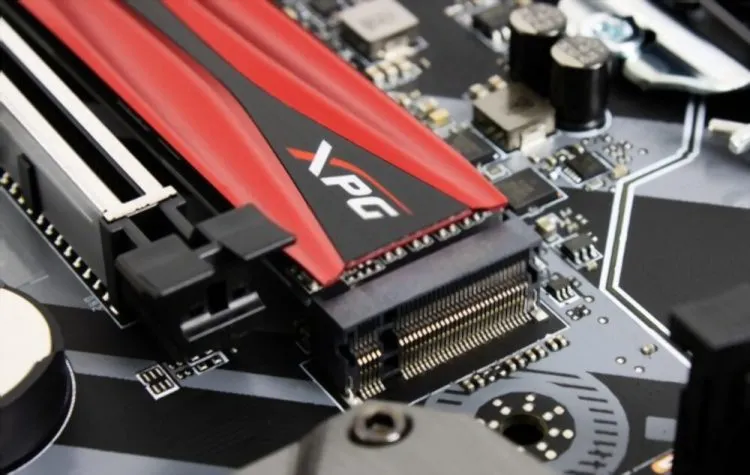
What Is M.2 SSD?
M.2, pronounced m dot two and formerly known as the Next Generation Form Factor (NGFF), is a specification for internally mounted computer expansion cards and associated connectors. M.2 replaces the mSATA standard, which uses the PCI Express Mini Card physical card layout and connectors. Employing a more flexible physical specification, M.2 allows different module widths and lengths, which, paired with the availability of more advanced interfacing features, makes M.2 more suitable than mSATA in general for solid-state storage applications, particularly in smaller devices such as ultrabooks and tablets. The M.2 specification supports NVM Express (NVMe) as the logical device interface for M.2 PCI Express SSDs, in addition to supporting legacy Advanced Host Controller Interface (AHCI) at the logical interface level. While the support for AHCI ensures software-level backward compatibility with legacy SATA devices and legacy operating systems, NVM Express is designed to fully utilize the capability of high-speed PCI Express storage devices to perform many I/O operations in parallel. M.2 SSD (Solid-State Drive) is commonly used inside the internally mounted storage expansion cards. M.2 SSD re-checks if the computer is capable of performing high-performance storage. Compared to SSD, they are small, such as Mini Serial Advanced Technology Attachment (mSATA). SSD also specifies storing the media that can save the persistent data on the solid-state flash memory. And the M.2 SSD is usually known as the Next Generation Form Factor.
M.2 SSD Not Showing Up
For information, let us tell you that M.2 SSD will not be visible in your Windows 10/11. We can see a lot of reports on this issue on Reddit and some other social pages. Also, many people are still complaining about "M.2 SSD Not Showing Up" in the upcoming passage; We'll explain a fix for this troubleshooting. We have added four improvements; If one fix doesn't work, you can try the next fix, as we've detailed the possible guidelines.
How To Fix M.2 SSD Not Showing Up?
Try Updating Your M.2 SSD Driver
- Press Win+X simultaneously and click “Device Manager.”
- Now expand the Disk Drives.
- Now right-click the M.2 SSD and choose Update Driver Software.
- "Search Automatically For Updated Driver Software." click this option from the Update Driver Software window.
- Now wait until the update is completed, and restart your computer to see if the error is fixed. If you still face issues, then try the upcoming fix.
Try Using Hardware And Devices Troubleshooter
- Type this “Hardware and Devices” on the search box, and proceed to click to start.
- Now click Next, and wait till the scan is over.
- This will state what problem you need to fix (If your computer is currently running any problem, it will appear here).
Try to Assign Your Drive Letter
- To do so, open “Disk Manager.”
- Now right-click your SSD and proceed to choose “Change Drive Letter And Paths.”
Try Seeking M.2 SSD Repair Service
If you find none of those mentioned above fixes repair your issue, then consider fixing the issue using a professional disk repair service. “EaseUS” aids you with “Manual disk repair service.” You can now repair your m.2 SSD errors using these simple clicks. If you feel the procedure is a bit longer, then try to contact an expert for more guidance
Can’t Detect M.2 SSD Possible Issues
| Issues | Cause Of Issue |
| Causes of BIOS Issue | You have not configured your BIOS setting. (M.2 SSD is not enabled.)Your M.2 SSD is not properly connected to the computer. |
| Causes of Disk Management Problem | Your driver needs to update.Troubleshoot your hard disk.Your drive letter is missing |
Hope you will be satisfied with this article. Don’t forget to bookmark our page if you want to read more Tech, game updates and entertainment news
Disclaimer: The above information is for general informational purposes only. All information on the Site is provided in good faith, however, we make no representation or warranty of any kind, express or implied, regarding the accuracy, adequacy, validity, reliability, availability or completeness of any information on the Site.
